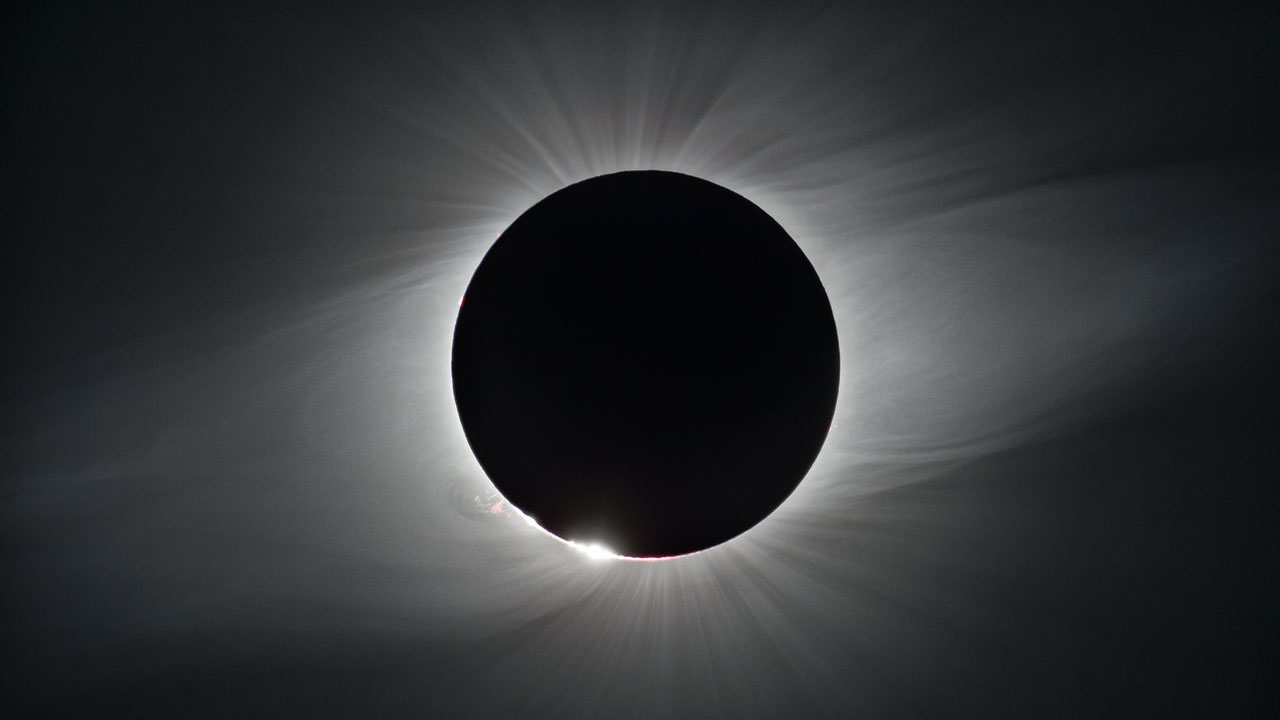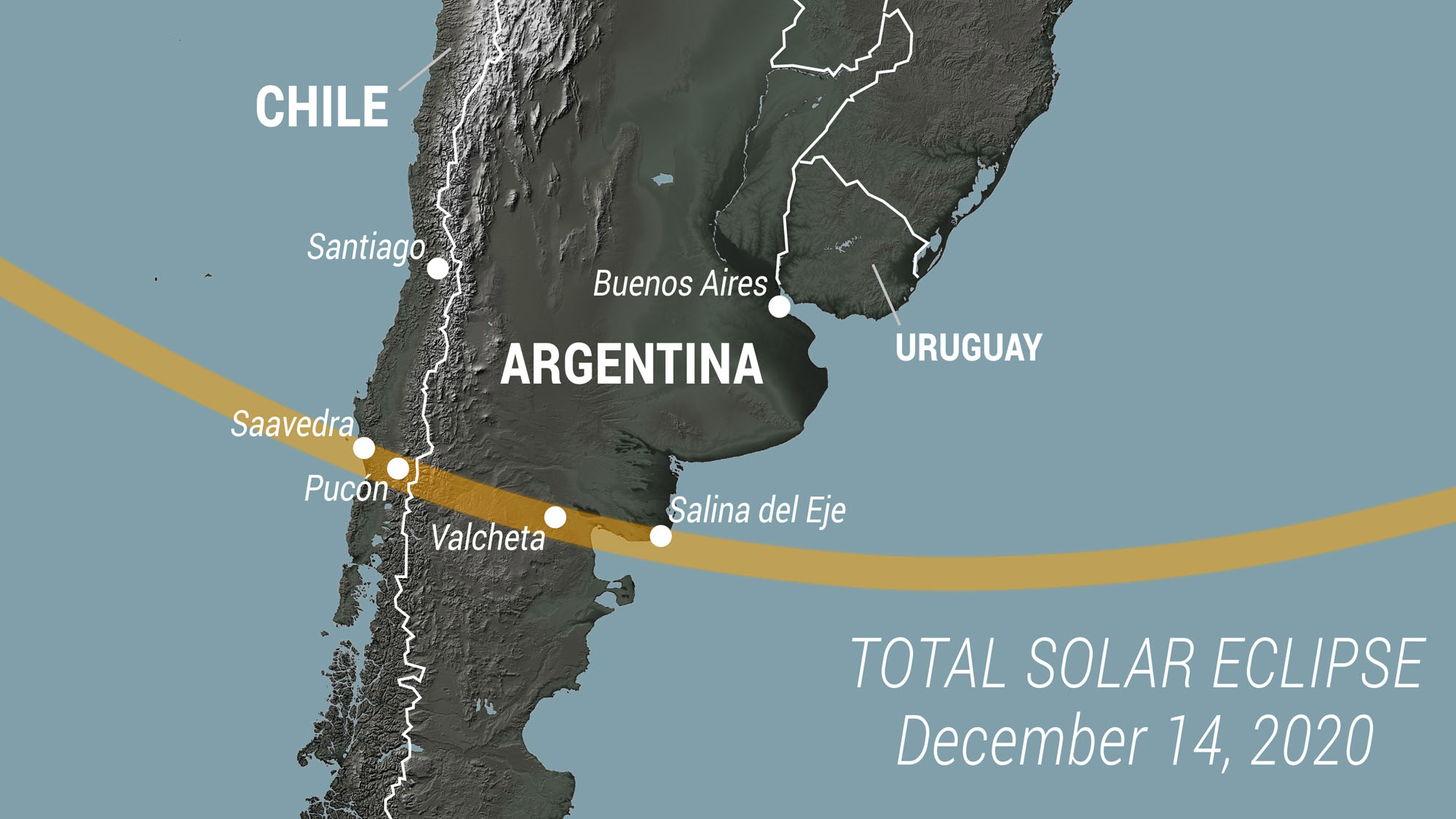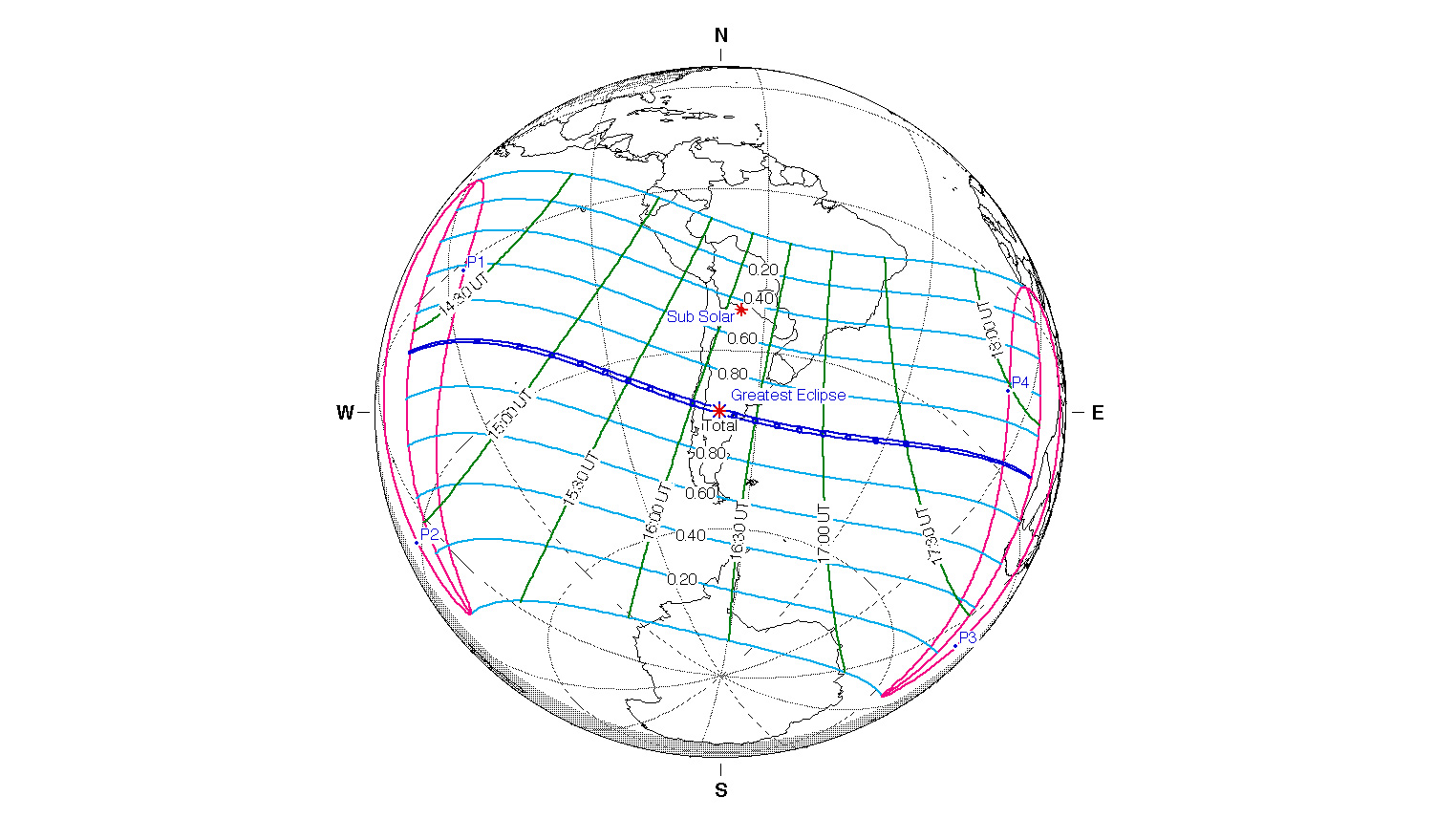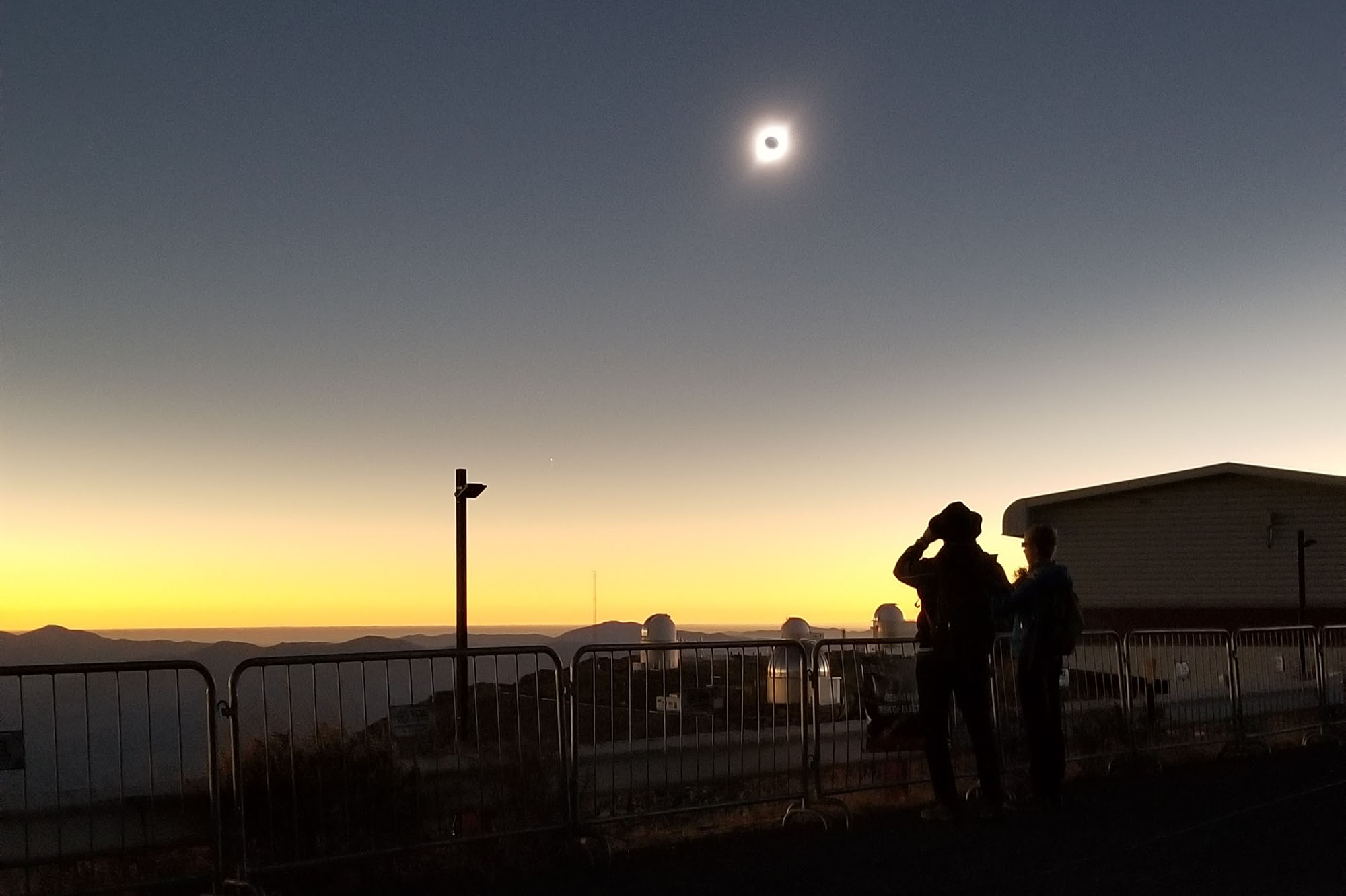The only total solar eclipse of 2020 occurs Monday. Here's what to expect.
Like the previous total solar eclipse in 2019, the Dec. 14, 2020 event will happen over the Southern Cone of South America.
On Monday (Dec. 14) parts of South America will be briefly plunged into darkness by a total solar eclipse.
This relatively rare, incredible event occurs when the moon sweeps across the daytime sky and fully covers the sun's disk as viewed from Earth, briefly blocking out the entire body of the sun except its outermost layer, called the corona. A solar eclipse produces what looks like a 360-degree sunset, and plants and animals will respond as if it was dusk.
Related: Total solar eclipse 2020: Here's how to watch it online
Video: Total Solar Eclipse in December 2020 - Where is it visible?

The Dec. 14 total solar eclipse will begin in the Pacific Ocean. Then it will make landfall near Saavedra, Chile and first appear as a partial solar eclipse at 11:38 a.m. local time (9:38 a.m. EST; 1428 GMT), according to a NASA fact sheet.
Totality, when the moon completely blocks the sun, will begin in Saavedra at 1 p.m. local time (11 a.m. EST; 1600 GMT) and last for 2 minutes, 4 seconds. Closer to the center of the path of totality, eclipse viewers will see up to 2 minutes, 10 seconds of totality.

| Location | Partial begins | Totality begins | Duration | Partial ends |
|---|---|---|---|---|
| Saavedra | 11:38 a.m. | 1:00 p.m. | 2m 4s | 2:28 p.m. |
| Pucon | 11:41 a.m. | 1:03 p.m. | 2m 9s | 2:31 p.m. |
| Valcheta | 11:52 a.m. | 1:16 p.m. | 2m 11s | 2:43 p.m. |
| Salina del Eje | 11:59 a.m. | 1:25 p.m. | 6s | 2:50 p.m. |
The roughly 56-mile-wide (90 kilometers) path of totality will travel east across Chile and Argentina. The last place to see the total eclipse before it moves off the continent and over the Atlantic Ocean will be Salina del Eje, Argentina, where totality ends at 1:25 p.m. local time (11:25 a.m. EST; 1625 GMT).
Viewers throughout most of South America will be able to view a partial solar eclipse — when the moon appears to take a "bite" out of the sun's disk — according to NASA. Antarctica will also be exposed to up to a 40% partial solar eclipse. Above the line of totality, a partial eclipse can be seen as far north as Ecuador.
Get the Space.com Newsletter
Breaking space news, the latest updates on rocket launches, skywatching events and more!

The path of totality continues across the southern Atlantic Ocean and its stops off the coast of Namibia, according to In-The-Sky.org. Parts of the southeastern African continent, like the city of Cape Town, South Africa, will be exposed to up to a 60% partial solar eclipse shortly before sunset.
| Location | Partial begins | Maximum | Partial ends | Magnitude |
|---|---|---|---|---|
| Santiago | 11:36 a.m. | 1:01 p.m. | 2:31 p.m. | 0.83 |
| Buenos Aires | 12:03 p.m. | 1:32 p.m. | 2:59 p.m. | 0.79 |
| Montevideo | 12:09 p.m. | 1:37 p.m. | 3:03 p.m. | 0.79 |
| São Paulo | 12:45 p.m. | 2:04 p.m. | 3:16 p.m. | 0.43 |
| Lima, Peru | 9:16 a.m. | 10:16 a.m. | 11:23 a.m. | 0.28 |
| Walvis Bay, Namibia | 6:58 p.m. | 7:40 p.m. | after sunset | 0.76 |
The most recent solar eclipse occurred on June 21, 2020. This annular, or "ring of fire," eclipse didn't fully block out the sun, but nevertheless, it dazzled spectators across parts of Africa and Asia. The last total solar eclipse happened on July 2, 2019 and, like the upcoming total eclipse, also occurred over South America.

After Dec. 14, the next solar eclipse will be an annular eclipse that passes over Canada, Greenland and parts of Asia on June 10, 2021. The next total solar eclipse will appear over South America on Dec. 4, 2021.
As tempting as it might be, never look directly at a solar eclipse with naked eyes. Regular sunglasses or a telescope require a special solar filter to prevent the user from damaging their vision.
Follow Doris Elin Urrutia on Twitter @salazar_elin. Follow us on Twitter @Spacedotcom and on Facebook.
Join our Space Forums to keep talking space on the latest missions, night sky and more! And if you have a news tip, correction or comment, let us know at: community@space.com.

Doris is a science journalist and Space.com contributor. She received a B.A. in Sociology and Communications at Fordham University in New York City. Her first work was published in collaboration with London Mining Network, where her love of science writing was born. Her passion for astronomy started as a kid when she helped her sister build a model solar system in the Bronx. She got her first shot at astronomy writing as a Space.com editorial intern and continues to write about all things cosmic for the website. Doris has also written about microscopic plant life for Scientific American’s website and about whale calls for their print magazine. She has also written about ancient humans for Inverse, with stories ranging from how to recreate Pompeii’s cuisine to how to map the Polynesian expansion through genomics. She currently shares her home with two rabbits. Follow her on twitter at @salazar_elin.









